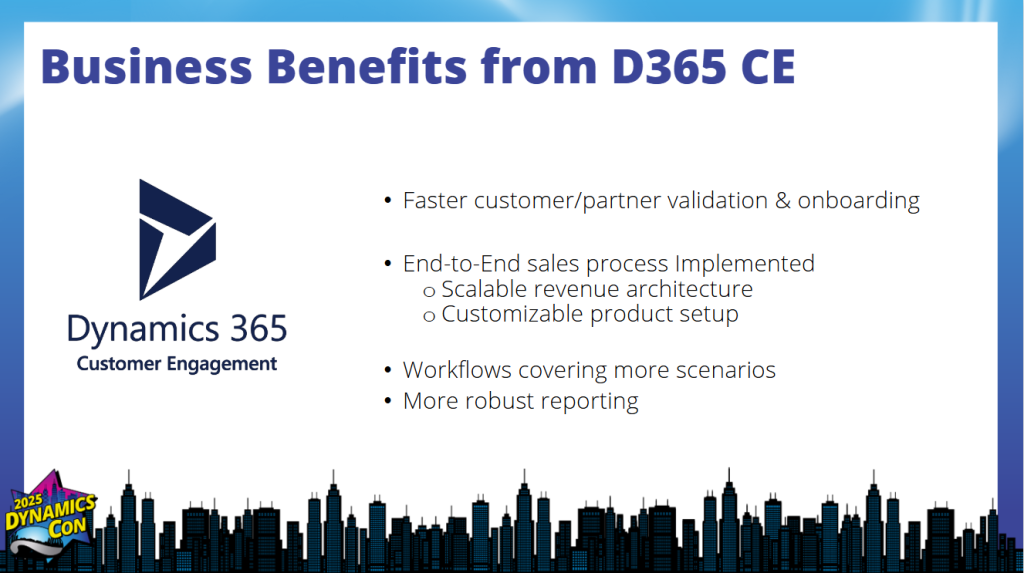Part 2 of 6: From Dual Systems to Single Source of Truth
“Salesforce vs Dynamics 365 – Which CRM is better?”
If you Google this question, you’ll find thousands of articles claiming to have the definitive answer. Spoiler alert: They don’t. Because the real answer isn’t about which platform has more features or better reviews—it’s about which platform serves your specific business needs better.
When our client’s team faced this decision during their merger, they discovered that getting past the marketing hype required a completely different approach to platform comparison.
The Myth of the “Better” Platform
Here’s what most comparison articles won’t tell you: Both platforms are constantly copying each other’s features.
Microsoft’s product team actively monitors Salesforce‘s roadmap, and vice versa. When one platform releases a significant feature, you can bet the other will have their version within the next release cycle. This feature-chasing game means that gap analyses based on current functionality quickly become obsolete.
So, if features aren’t the differentiator, what is?
What our FinTech client Discovered: The Real Differentiators
During their evaluation, clients team moved beyond feature checklists to understand the fundamental differences that actually matter in day-to-day operations.
Salesforce’s Real Strengths
- Superior Data Entry Controls: One of Fintech’s administrators noted: “Salesforce has better guardrails for fields where you can limit data entry—you can’t accidentally enter a phone number with alphabetic characters, or enforce specific formatting like uppercase.”
- Call Center Integration: For organizations with heavy phone-based sales or support, Salesforce’s contact center capabilities and speech analytics integration significantly outperformed Dynamics 365 at the time of evaluation.
- App Ecosystem Maturity: Salesforce’s AppExchange has more third-party applications available, though the gap is narrowing as Microsoft’s ecosystem grows.
- Reporting Flexibility: While Fintech discovered their 869 reports were actually a symptom of poor implementation, Salesforce’s reporting tools do offer more flexibility for power users who want to create complex, custom reports quickly.

Dynamics 365’s Real Strengths
- Microsoft Ecosystem Integration: If you’re already using Office 365, Azure, or other Microsoft products, the integration advantages are substantial—and often overlooked in pure feature comparisons.
- Licensing Flexibility: Microsoft’s approach to bundling means that adding CRM to existing Microsoft customers is often significantly cheaper than competitive standalone pricing.
- Platform Architecture: The Power Platform integration (Power Apps, Power Automate, Power BI) provides a more cohesive development and customization environment.
- Enterprise Integration: For organizations running Microsoft ERP systems, the data integration and user experience consistency can be game-changing.
The Fintech Decision Framework
Instead of getting lost in feature comparisons, Fintech’s team developed a framework that looked at four critical dimensions:
1. Existing Investment Analysis
- What customizations already exist?
- How much would it cost to recreate functionality in the other platform?
- What integrations would break and need rebuilding?
Fintech’s Reality: Dynamics 365 contained millions of dollars worth of FinTech-specific partner validation workflows that would be prohibitively expensive to recreate in Salesforce.
2. Total Cost of Ownership (3-Year View)
- Platform licensing costs
- Implementation and migration expenses
- Ongoing maintenance and enhancement costs
- Training and change management investment
Fintech’s Reality: While Salesforce licensing might have been competitive initially, Microsoft’s ecosystem discounts made Dynamics 365 significantly cheaper over time.
3. Integration Ecosystem
- Which platform integrates better with existing systems?
- What about future planned integrations?
- How robust are the APIs and integration options?
Fintech’s Reality: Their verification service integrations (LexisNexis, D&B) worked well with both platforms, but Dynamics 365’s existing integrations were more mature and feature-rich for their specific use cases.
4. Business Process Alignment
- Which platform better supports current workflows?
- How much process change would each option require?
- What’s the impact on regulatory compliance?
Fintech’s Reality: The Dynamics 365 system already handled their complex multi-level partner validation process—their most unique and valuable business capability.
The Surprising Truth About Platform Selection
After extensive analysis, our client made a counterintuitive discovery: The “better” platform wasn’t the one with more features—it was the one that required less change to their core business processes.
Despite having a CRO who was a Salesforce expert and conference speaker, the data clearly showed that Dynamics 365 was the right choice for Fintech. Why?
The Tipping Point: Existing business logic.
The Dynamics 365 system already contained their most critical and unique functionality. Recreating these workflows in Salesforce would have required:
- 12-18 months of development time
- Millions in consulting and development costs
- Significant business risk during the transition
- Potential regulatory compliance issues

Unlock smarter decision-making
Download our Fintech Evaluation Checklist to confidently choose the right solution for your business.
The Bottom Line
There is no universally “better” CRM platform. Salesforce excels in certain areas, Dynamics 365 in others. The right choice depends entirely on your specific situation, existing investments, and business requirements.
Our client’s success came from focusing on business value rather than feature lists, and from making decisions based on data rather than preferences. Their CRO’s Salesforce expertise didn’t disappear—it became valuable input in the decision process rather than the deciding factor.
What’s Next?
Having the right platform is only half the battle. In our next post, we’ll dive into the aspect that kills more CRM projects than any other: data migration.
We’ll share how Fintech successfully migrated years of customer data, why their initial approach with 869 Salesforce reports was actually a red flag, and the tools and techniques that made their migration successful when so many others fail.
Coming up in Part 3: “Data Migration: The Make-or-Break Moment” – Why 70% of CRM projects fail during data migration and the step-by-step approach that put Fintech in the successful 30%.
What’s been your experience with Salesforce vs Dynamics 365? Share your insights in the comments or connect with me on LinkedIn—I’d love to hear your perspective.
Still deciding between Dynamics 365 and Salesforce. Don’t leave your decision to chance—let data drive your path forward. Let’s talk.

